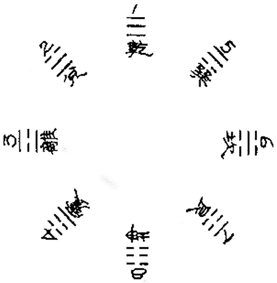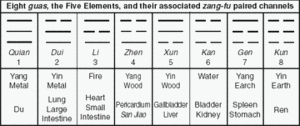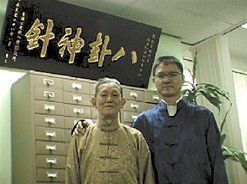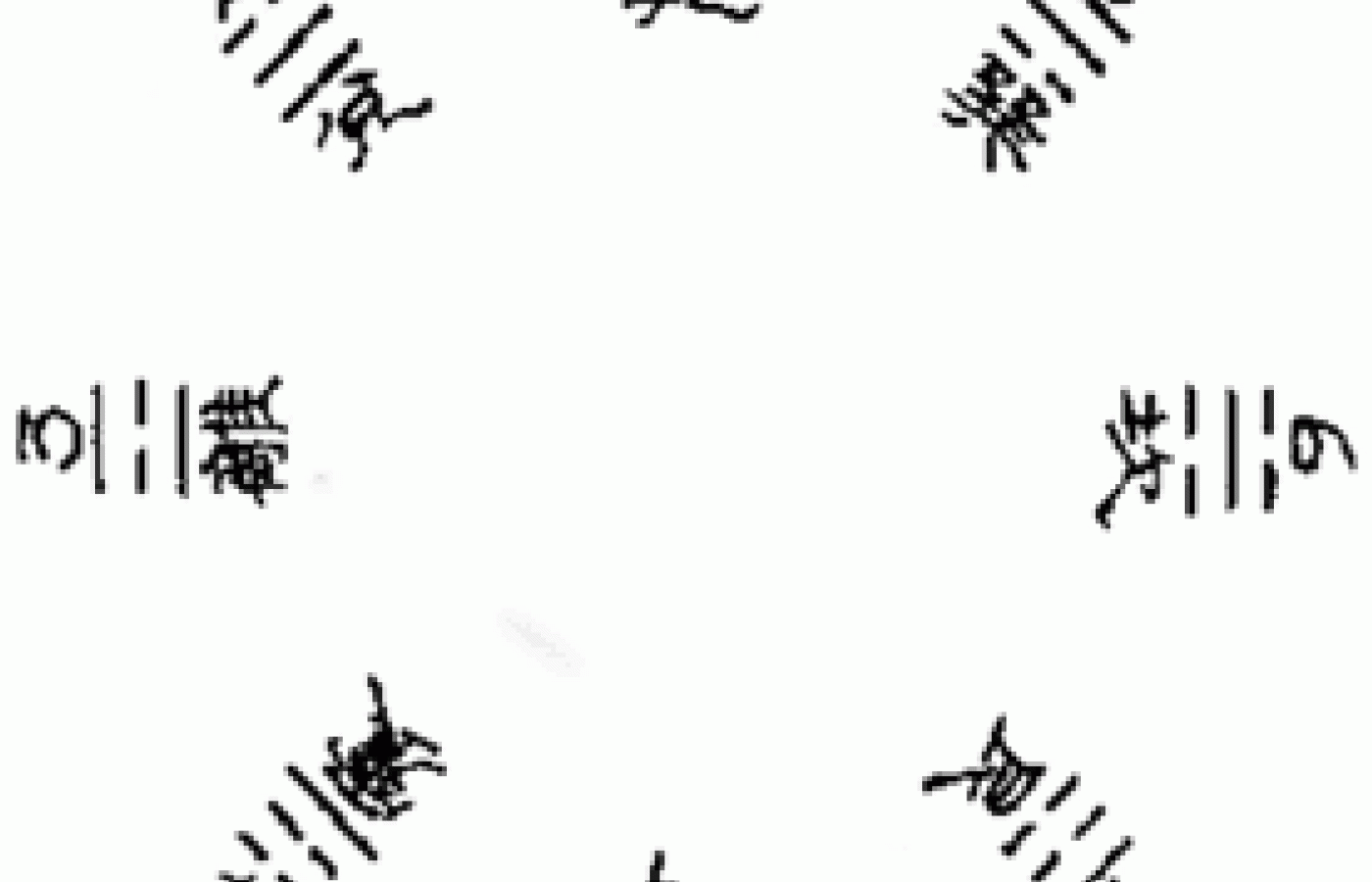People today want convenience, whether it be from their bank, credit card, favorite retail store, or restaurant. They demand it from the companies who hold their loyalty, including their health care providers (you). They don’t want to call and possibly be put on hold, and they want to use an app or schedule an appointment on your website. Here are three reasons your practice can gain by switching to online appointment scheduling.
I Ching Acupuncture
Dr. Chao Chen is a living legend in the Asian acupuncture community, and is famous for developing an application of ancient acupuncture principles based on the I Ching, which is renowned for quick and immediate results. Many well-known people from all walks of life have experienced the work of Dr. Chen, including former Los Angeles mayor, the late Thomas Bradley; tao master Bao Lin Wu; and world-renowned teacher Dr. Richard Teh-Fu Tan. Dr. Tan has stated at his workshops that he deeply studied Dr. Chen's work, and credits it as the foundation of his own treatment methods.
Born in Wenjou, China in 1925, and later moving to Taiwan to avoid the Communist takeover, Dr. Chen began his professional career as a mechanical engineer. His wife mentioned that there was an acupuncture class being held nearby. Dr. Chen decided to attend the class in the evenings, and fell in love with this healing art. During his studies, he heard about a local ba gua acupuncture master, and decided to observe the master in his clinic. Dr. Chen was impressed with the results he witnessed, and asked if he could learn the master's method. The master replied that it was tradition to only teach family members and regretted he could not share his knowledge. Nevertheless, the two became friends over the years, and Dr. Chen was able to determine that the ba gua acupuncturist was using primarily one classic method from the Nei Jing: contralateral point selection.
Dr. Chen realized the Nei Jing was based on the principles of the I Ching or Book of Changes (Yi Jing). He committed himself to studying this ancient classic book and integrating its principles to the practice of acupuncture. He practiced and studied all of the traditional methods of Chinese medicine, including zang-fu; the Five Elements; the secondary vessels; zi wu liu zhu; and ling gui ba fa. Through daily meditation, study of the I Ching and his own knowledge of science and computers, Dr. Chen began to develop a system that integrated all aspects of acupuncture and I Ching theory. In 1975, Dr. Chen wrote Essence of Acupuncture Therapy as Based on Yi King and Computers, a thesis for the 1976 International Acupuncture Congress. Dr. Chen was asked to lecture about his book in Taiwan, Korea and Japan, and was an instant success in those communities. This little book was the basis of what would become one of the most influential systems of acupuncture in the 1990s and into the 21st century.
Dr. Chen's method is based on the most fundamental principle of I Ching and Taoist philosophy: balance. In I Ching theory, balance can be found in many ways. One is revealed by the ba gua, a central element in the I Ching and Taoist arts that reflects universal principles that can be applied to Chinese medicine. Below is the legendary Fu Xi's Early Heaven (Xian Tian) Ba Gua, which reveals a variety of balances, including the "opposite anatomical balance." A straight line (_____) is yang, while a dashed line (- - -) is yin.


Ba means "eight" and gua means "sign" or "signal." The eight trigrams or guas are presented above. Each gua is a code reflecting universal macrocosmic and microcosmic energies, influences and relationships. This ba gua is the basis for Dr. Chen's "balance" method. Note the exact opposite ba gua pairs; each is an inverted mirror of the other. If you examine qian (1) and kun (8), you will note that the lines are opposite; qian contains all yang lines and kun all yin lines. Together, they are a pair, like a lock and key, fitting together perfectly and reflecting one expression of balance. Another way to view balance is by counting the number of lines in each opposite pair: They all add up to nine. For example, li (3/Fire) has four lines and kan (6/Water) has five, the sum of which equals nine and reflects balance. Each gua is the inverted opposite of its pair, and each sums to nine. This opposing balance relationship can be found in the I Ching, and the balance method applies this universal principle to acupuncture practice. This ba gua also includes the concept of opposite anatomical balance.
Chinese medicine views qi and blood stagnation as the causes of many types of pain. The basic goal is to move qi and blood to eliminate stagnation and pain. Dr. Chen found in clinical practice that the most effective and efficient way to eliminate stagnations and create normal energy flow was to follow the form of the ba gua by treating the balancing point. By combining numerous principles of the Yi Jing, classic Chinese medical theories found in the Nei Jing and principles of Chinese metaphysics found in Chinese astrology, Dr. Chen developed a powerful and effective method to find optimal balancing points.
The theoretical basis of I Ching acupuncture begins with The Yellow Emperor's Classic of Internal Medicine (Nei Jing). Chapter 25 of the Nei Jing states: "Man corresponds with nature: In heaven, there are Yin and Yang, in man, there are 12 large joints of the limbs," and "When one understands the principles of the 12 joints, a sage will never surpass him." Chapter 27 of the Nei Jing states: "Diverse pricking to the right side or to the left, contralateral insertion of pricking the upper part to cure the lower disease, and pricking the left side to cure the right." These principles are the basis for the lower left part of the body treating the upper right side and the upper right side treating the lower left, the lower right side treating the upper left and the upper left treating the lower right. This is the foundation of Dr. Chen's balance method.
In classical Zi Ping Chinese astrology (Four Pillars of Destiny), there is a principle called the Six Combinations. This principle explains special relationships between the 12 earthly branches or zodiac animals. Six pairs of two branches combine with each other, creating an energetic relationship of connection. The Shou Gua (Ten Wings) of the Yi Jing or Book of Changes states: "It is natural that the eight guas (primal forces) move and exert themselves so that things undergo change and transformation, and they exchange places with one another. ... The eight guas combine with each other in this way." It is these principles from the Yi Jing, Nei Jing and Zi Ping that provide the classical foundational theory for the clinical application of using the ankle to treat the wrist; the elbow to treat the knee; and the shoulder to treat the hip. These energetic anatomical relationships are reflections of ba gua theory, in which each relationship gives balance to the other. For instance, if we treat the knee, it balances the elbow. There is an energetic relationship between these areas of the body like internal pathways connecting organs to channels. In this balancing method, one needle is often used to balance the energy of the opposite area, often resulting in immediate relief of pain. Dr. Chen has over 30 years of clinical experience with this method, and has found it to be a most powerful and effective method of acupuncture.
Yi Jing theory reflects the multidimensional aspect of life. Oriental medicine, having its roots in Yi Jing theory, also contains many models of viewing life. Wu Ji; Yin-Yang; Tai Ji; the Five Elements; Six Channels; Ba Gua; Ten Heavenly Stems; Twelve Earthly Branches; and the Jia Zi cycle of sixty are among the different ways of viewing a given situation, just as urinalysis; blood tests; X-rays; MRIs; and CAT scans are different ways of viewing the human condition. Dr. Chen realized that an effective treatment method usually included point(s) that are effective according to multiple models of acupuncture. This realization became the foundation for the balancing method. For example, if one has pain in the area of Large Intestine 11 (qu chi), one balancing point is contralateral at Stomach 35 (du bi) according to anatomical relationships, as well as the yang ming channel connection of hand and foot. If we look deeper, we can see at least six acupuncture theories that explain why this point is effective:
- lower body treating upper body;
- left side treats right side;
- contralateral balance (elbow to knee);
- six channel balance: hand and foot yang ming;
- 12 joints of human body; and
- ba gua pairing of dui (Large Intestine) and gen (Stomach).
Dr. Chen's method consists of three major systems:
- Corresponding balance among the eight trigrams and 12 zang-fu channels. This method includes the anatomical balance points of opposites, including hand and foot; elbow and knee; and shoulder and hip. This method contains vertical contralateral balance points for the limbs.
- Arrangement of the proper order of the eight trigrams. This method includes horizontal balance points, including zang-fu paired channels, trigrams and anatomical locations.
- Harmonizing the strong (yang) and weak (yin). This method includes balancing yin-yang excess or deficiency of the zang-fu organs by way of the eight guas; 64 hexagrams; five transporting; yuan source; and luo connecting acupuncture points.

Dr. Chen has passed his system of acupuncture to his son, Yu Chen, who has trained with him for many years and is now translating his books into English. Yu Chen remembers as a boy seeing his father in Taiwan treating patients and being very impressed with the success he obtained in his clinical practice. This experience stayed with him much of his life, and after achieving a successful career as a film director, he changed his profession to follow in his father's footsteps.
The Chen family hopes this practical method of acupuncture will become part of the standard protocol of acupuncture around the world. For more information on the balancing method, they can be reached at: I Ching Acupuncture Center, 3303 Del Mar Avenue, Rosemead, CA 91770.



